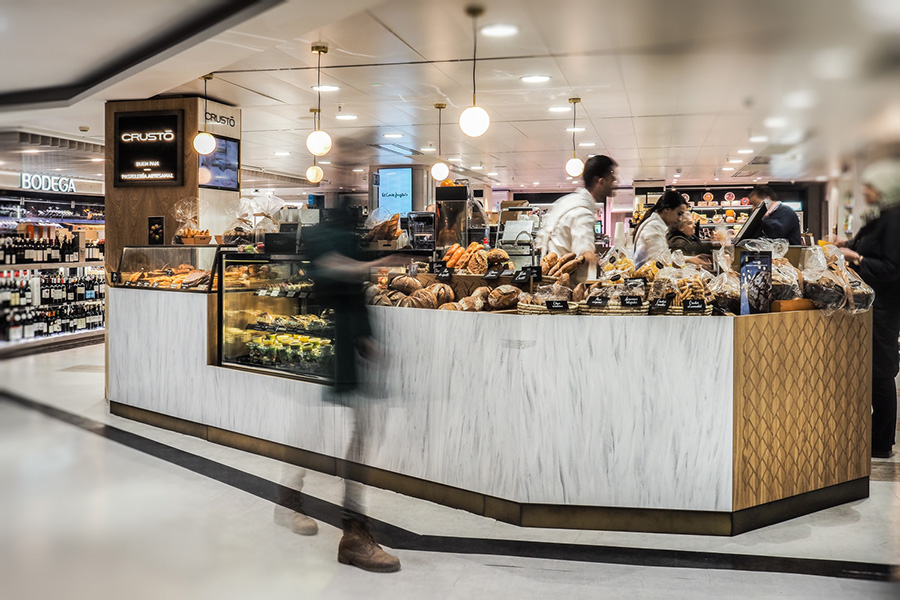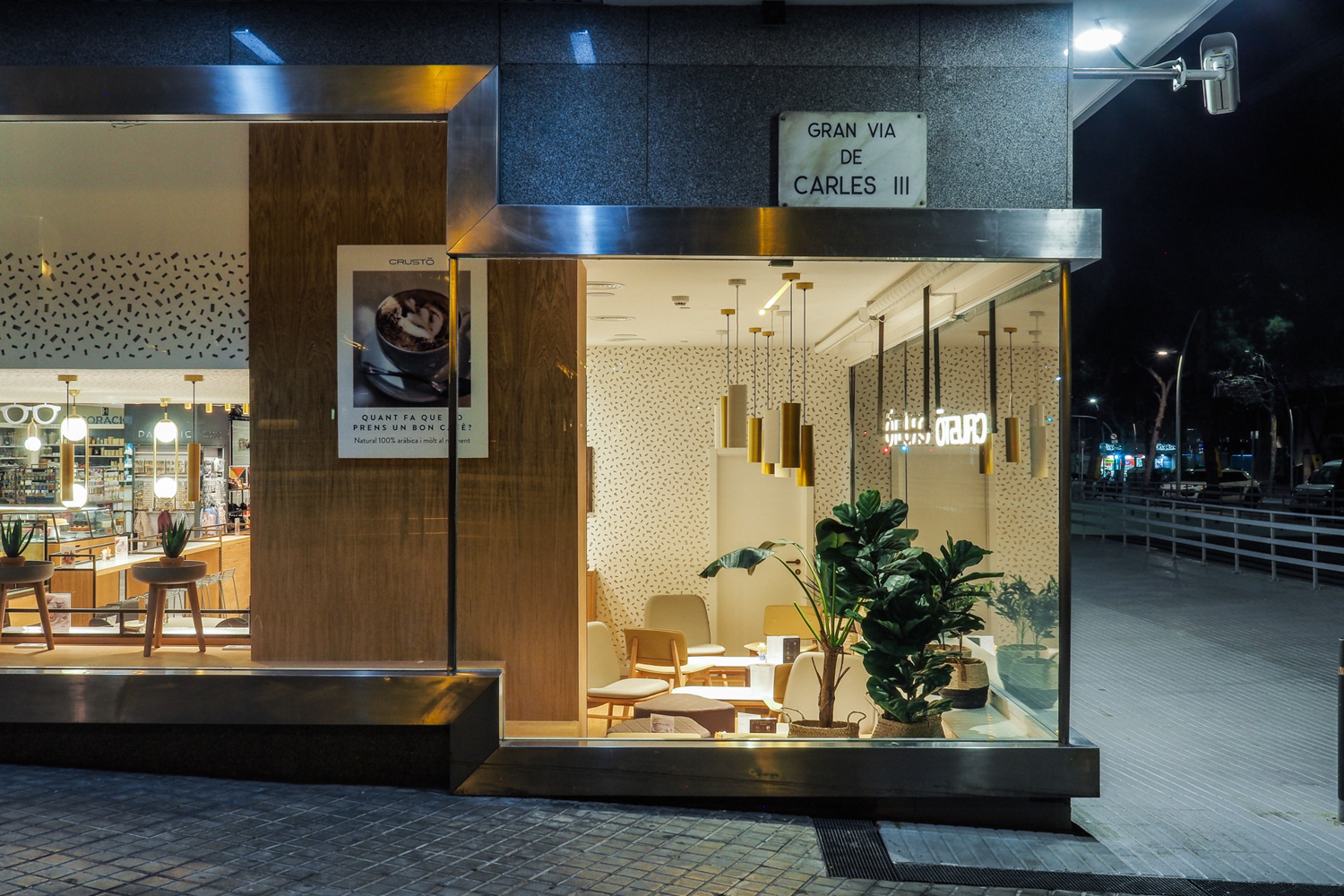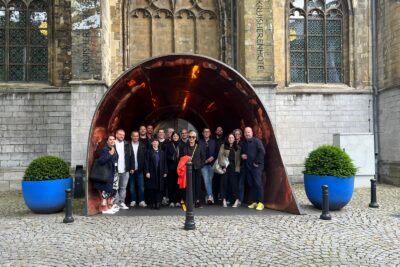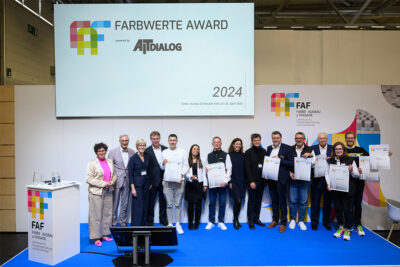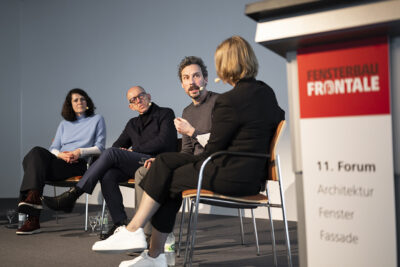Eine Frage an… súpernormal
Die spanischen Architekten von súpernormal haben sich zum Ziel gesetzt, Retail-Projekte zu entwickeln, die nicht nur ästhetisch überzeugen, sondern auch noch nachhaltig sind.
What is your understanding of Green Retail?
When we where about to start an Architecture & Design office, the first we asked to ourselves was what would it make us be finance sustainable and happy? We answered, looking at our past working experience in large Retail companies and developing sustainable architecture, that the best we could do would be to mix everything we learned, and then it came out: “let´s develop Retail projects based in a sustainable way”.
We believe Green Retail is as important as the Retail market itself. Let´s explain this through a case – the data are taken from www.knoema.es
Today Starbucks is the largest coffeehouse company in the world, with 30,626 Retail locations as of the third quarter of 2019, followed distantly by such coffee shop chains as Dunkin Donuts with about 10,000 restaurants, Tim Hortons with 4,300 outlets, and Costa Coffee with nearly 1,700 stores worldwide.
Starbucks was founded in 1971 in Seattle, Washington, and incorporated on November 4, 1985, to become the publicly traded Starbucks Corporation. Based on the company’s positive, sustained operating results, it is ranked among Forbes’ top-500 world’s biggest public companies. As of 2018, Starbucks’ profit was $4.5 billion and it had a market value of $70.9 billion.
While Starbucks initially focused on the domestic US market, in 1996 the company opened its first stores outside the US. Since then, Starbucks’ international footprint has expanded to 24,058 stores located in three main markets: the Americas, which includes Canada, Latin America, and the US; China and the Asia Pacific (CAP); and the Middle East and Africa (EMEA). The domestic market still represents more than half of all Starbucks stores; California, with 1,863 locations, has more stores than any other state.
Trading has been the world’s main economical engine since prehistoric times. With this numbers and volume the importance of Retail market is unquestionable, its impact in the world as well. So today more than ever we must be responsible in how we design these sales spaces, how we minimize their impact on the planet and how we make brands and customers become aware.
If we dig deeper and we look into the future, we know that nowadays, the 70% of the purchase decisions are taken in the shops (offline). Many studies say that the emotional component is the first factor (including as an emotion what brand it is and how much does the product cost) of their decisions. Therefore, a correct presentation of the product, a specific space environment, or an adequate lighting, will generate actions towards consumption, resulting in positive purchasing decisions. But we are living amazing times, when everyday more a more people is worry about the future of our own planet, and they are asking theirselves, quoting William Morris, “how we live and how we could live”. We believe now that “could” is not an option, it is a “must”, and the big companies can´t denied it any longer and they can´t continue looking to the other side. Sustainability and brand responsibility are becoming a big emotional reason to choose one product instead of others.
For Súpernormal, the «Green Retail» goes beyond a trend, it is social innovation, it is our way of renewing ourselves and what we do to add more value to the brands we work with. It is also our response to a global need of a society that is starting to look after the environment where it lives.
Today the transformation is continuous and it happens very fast. More than ever we need a change of mentality, in which the execution of projects is not only about great ideas. We believe that the commercial spaces and the shopping experience should be something else.
How do we do it?
When we design, when we build commercial spaces, the commitment we talked before leads us to keep in mind a few basic principles:
– Economic savings (keep as much as we can of what it was already there: to build less).
– Healthy Retail environments (less use of chemistry and more use of natural materials).
– Energy saving space. We are thinking about commercial stores that can, in fact, produce energy, may be for public sharing?
– Controlling the generation of waste (generating little or no waste during the construction works).
– Local manufacturing.
– Materials, building and manufacturing innovation to minimize the environmental impact and to maximize the life cycle.
– Use of materials and methods of bioconstruction that we already know from passive housing.
We know how hard is to follow this principles when we design Retail environments. If you compare store design with private residential design, you will find that the amount of variables we need to manage rises a lot: the brand, the product, the marketing director, the trade marketing directors, clients, costumers, vendors, suppliers, builders, furniture manufacturers, workers, etcetera. But as we always say, if we can achieve a 10% percents of our “Green Retail” principles is better than nothing.
We are already working on this Green Retail principles in order to develop a matrix that can help to give a clear understanding of the benefits of Green Retail to the brands, to their consumers and to other design offices. The idea is to get a system to implement technical solutions in commercial spaces so we will be able to certify them as “Green Retail”.
We keep asking to ourselves, how would the future look like? There are several writings about passive housing, even there are people working on sustainable offices and factories but not that much about stores, malls or shops. As we said, Retail market is huge and it has a big influence on us, humans, on our cities, on how we live, on how we buy, on how we interact and so on the planet. We imagine the shops of tomorrow as passive stores as a result of an intense collaboration between the brands, the creative crew and the technicians. We believe that shops need to be designed as an exchange space, where the brand returns to the society a part of the benefit they get from it to build a better one.
For more information on the office Súpernormal: www.estudionormal.com
- Pablo Rey Medrano
- Diego Sanchez Blanco
Fotos: Súpernormal
- Crustó Preciados
- Crustó Preciados
- Crustó Diagonal









